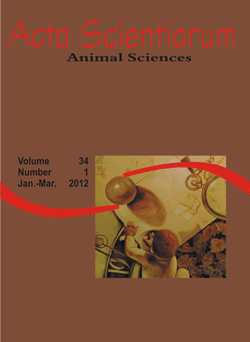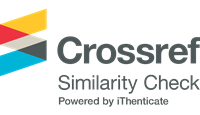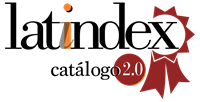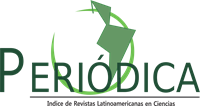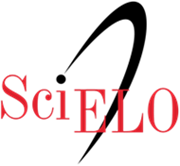<b>Tendência genética para pesos padronizados aos 205, 365 e 550 dias de idade de bovinos Nelore da região norte do Brasil</b> - 10.4025/actascianimsci.v34i1.12172
Resumo
Pesquisas efetivas que avaliam a eficiência dos rebanhos bovinos na região Norte do Brasil são insipientes. Por isso, objetivou-se avaliar as mudanças genéticas aditivas diretas e maternais dos pesos padronizados para 205 (P205), 365 (P365) e 550 (P550) dias de idade, de animais da raça Nelore, criados a pasto, nascidos entre 1997 e 2007 na região Norte do Brasil. As estimativas dos componentes de (co)variâncias utilizadas no cálculo dos valores genéticos foram obtidas pelo método de máxima verossimilhança restrita livre de derivadas (REML), usando o aplicativo MTDFREML. As tendências genéticas dos efeitos genéticos direto e maternal foram estimadas pela regressão, ponderada, das médias anuais dos valores genéticos dos animais. As estimativas das herdabilidade para P205, P365 e P550 foram 0,33; 0,51 e 0,41, com ganhos genéticos de 0,494, 1,229 e 1,500 kg ano-1, respectivamente. Em virtude da variação genética existente, verificou-se que a seleção do rebanho na região Norte do Brasil tem enfatizado principalmente a seleção para peso pós-desmama, ressaltando-se que a seleção para estes pesos pode gerar ao longo dos anos, aumento nos custos de produção, da idade ao abate e acabamento dos animais, havendo assim, necessidade de seleção mais criteriosa para estas características.Downloads
DECLARAÇÃO DE ORIGINALIDADE E DIREITOS AUTORAIS
Declaro que o presente artigo é original, não tendo sido submetido à publicação em qualquer outro periódico nacional ou internacional, quer seja em parte ou em sua totalidade.
Os direitos autorais pertencem exclusivamente aos autores. Os direitos de licenciamento utilizados pelo periódico é a licença Creative Commons Attribution 4.0 (CC BY 4.0): são permitidos o compartilhamento (cópia e distribuição do material em qualqer meio ou formato) e adaptação (remix, transformação e criação de material a partir do conteúdo assim licenciado para quaisquer fins, inclusive comerciais.
Recomenda-se a leitura desse link para maiores informações sobre o tema: fornecimento de créditos e referências de forma correta, entre outros detalhes cruciais para uso adequado do material licenciado.




